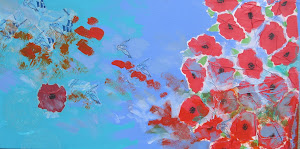



Mostly, we looked at mammals, reptiles, amphibians and also some insects. Fourth grade is studying the birds of each habitat, so we left them out of this assignment.




To help the students get ready for their collages, they first had to sketch their animals and try to map out the large shapes in the animals. This was helpful once they began to cut out the shapes from cardboard. Students were encouraged not to draw to draw anything on the cardboard, but to practice their skills of "drawing with their scissors." Students were also challenged to create even the smallest of details with cut and glued shapes. Most of them did, but some used Sharpie instead.



Some students spent a couple weeks on one very detailed animal. Others worked equally hard to produce a family or multiple types of animals.




It was fun to watch the students select which cardboard boxes they would use to make their animals. We collected hundreds of boxes. As the collections came in, we began sorting them into clear storage containers by color. It's a lot of work to maintain kind of that organization, but it's worth it! For example, instead of spending lots of time trying to find a brown box, the students instead got to put their energy into choosing the brown box with the texture, print, pattern, or shade of brown that they wanted.




Though these pieces are quite delicate when wet, they are pretty sturdy when dry. The students had to use a gentle touch when transporting them to the drying table.




Students also used some collected yarn scraps and beads to add more texture and detail to their animals. Some students even pulled apart the yarn to create some fluffy fuzz for furry creatures. A couple students even used thin, clear plastic lids to create parts of bugs (like the wings of a dragonfly) that needed to be transparent.




In the upcoming month, multiple grade levels will work on putting together a collaborative installation to create each of the 6 habitats we have studied. The fifth graders will contribute their animals to the habitat installations. Can't wait to see it all come together!

































1 comment:
Wow! These are amazing! The children have left me in awe of their creative abilities and attention to detail. Way to go!
Post a Comment